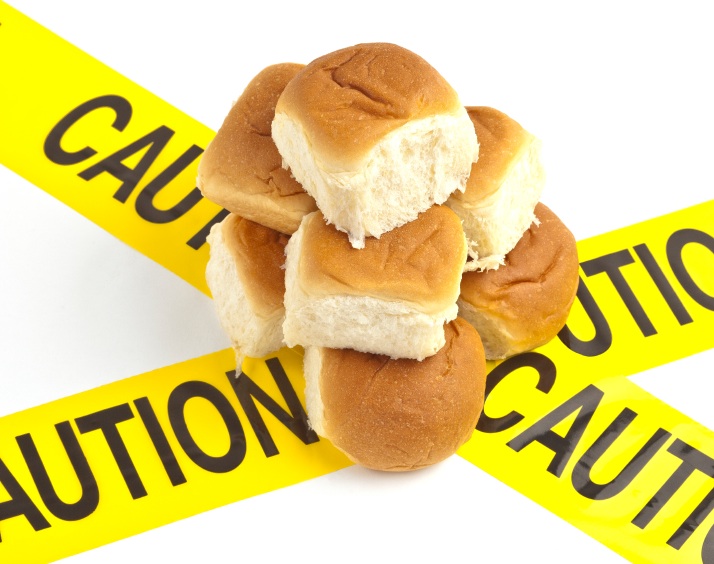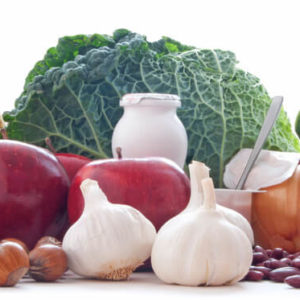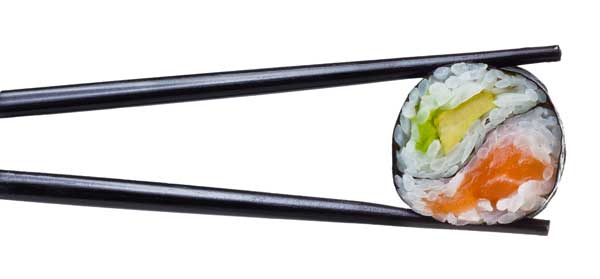What to Eat if You Have Prediabetes

You get a call from your doctor telling you your sugar is a little high on your blood test. You don’t have diabetes but will need to watch it. You’re told to cut out sugar, bread and pasta. But now you are in a panic because you don’t know what to eat. Carbs are everywhere! Do you need to cut out carrots? Can you ever eat bread or pasta? And what about wine? The good news is that you can probably eat a lot more than you think. Read my tips on what what to eat when you have prediabetes. By making diet and lifestyle changes now, you may be able to prevent and/or reverse prediabetes and type 2 diabetes.
sugar, bread and pasta. But now you are in a panic because you don’t know what to eat. Carbs are everywhere! Do you need to cut out carrots? Can you ever eat bread or pasta? And what about wine? The good news is that you can probably eat a lot more than you think. Read my tips on what what to eat when you have prediabetes. By making diet and lifestyle changes now, you may be able to prevent and/or reverse prediabetes and type 2 diabetes.
Updated: 11/19
Scary stats about prediabetes
First, a few scary stats. We know diabetes is an epidemic. But prediabetes is even more of an epidemic. Approximately 84 million American adults—more than 1 out of 3—have prediabetes. It’s even higher for adults ages 65 and older – the NIH estimates that 50% of older adults have prediabetes. And 90% of people who have it don’t know they have it! Prediabetes puts you at increased risk of developing type 2 diabetes, heart disease, and stroke. Many of these people will go on to develop diabetes at some time in their life. But it doesn’t mean it’s inevitable!
Risk factors for prediabetes
Because prediabetes is so common, it’s important that you are aware of the risk factors, which include:
- Being overweight
- Being 45 years or older
- Having a parent, brother, or sister with type 2 diabetes
- Being physically active less than 3 times a week
- Ever having gestational diabetes (diabetes during pregnancy) or giving birth to a baby who weighed more than 9 pounds
- Having polycystic ovary syndrome
Race and ethnicity are also a factor: African Americans, Hispanic/Latino Americans, American Indians, Pacific Islanders, and some Asian Americans are at higher risk.
How do you know if you have prediabetes?
Since only 10 % of people know they have prediabetes, it’s important that you know your blood sugar numbers.  Unfortunately, not all physicians discuss these numbers with their patients … unless the numbers are quite high. I feel like the “Prediabetes Police” because I want all patients to know their numbers. If your fasting glucose is 100-125, it can be called prediabetes.A normal level is under 100. If it’s over 126, it would be diabetes. If you are borderline, you may want to have another test just to make sure. Remember this test should be fasting – no food and only water prior to the test. Another good test is called Hemoglobin A1c. This is a 12 week average of blood sugar. Normal is under 5.7. Prediabetes is 5.7-6.4 and diabetes is 6.5 and higher. You do not have to fast for this test.
Unfortunately, not all physicians discuss these numbers with their patients … unless the numbers are quite high. I feel like the “Prediabetes Police” because I want all patients to know their numbers. If your fasting glucose is 100-125, it can be called prediabetes.A normal level is under 100. If it’s over 126, it would be diabetes. If you are borderline, you may want to have another test just to make sure. Remember this test should be fasting – no food and only water prior to the test. Another good test is called Hemoglobin A1c. This is a 12 week average of blood sugar. Normal is under 5.7. Prediabetes is 5.7-6.4 and diabetes is 6.5 and higher. You do not have to fast for this test.
Now don’t panic if you are on the low end of prediabetes (approximately 5.7-5.9), especially if you are lean, exercising on a regular basis, have a healthy diet and are over the age of 60. Your goal may may just be to prevent it from getting higher. As we age, our bodies don’t produce and utilize insulin as well as it did when we were younger. It is possible that you may not be able to get it under 5.7. But if you are overweight and/or don’t eat a healthy diet or aren’t active, this may be your wake up call to make some lifestyle changes!
What is insulin resistance?
Before moving on to my tips, I’d like to explain what it means to be insulin resistant as this  occurs in most people with prediabetes and diabetes. It is often a precursor to both of these conditions. When we eat carbohydrates, they break down into sugar in our blood. This happens with all carbs, including candy, juice, fruit, brown rice, potatoes, etc. In response to rising blood sugar levels, our pancreas secretes insulin in attempts to get the sugar out of the blood and into fat and muscle cells to be used as energy. Think of insulin like a “key” trying to unlock the doors to the cells. Sometimes the key isn’t able to unlock the doors because the cells have become resistant to the insulin (called insulin resistance). So the pancreas has to work in overdrive mode and secrete large amounts of insulin. So this large amount of insulin is able to keep blood sugar levels normal … for a while. Eventually the pancreas starts to wear out from having to make so much insulin and your blood sugar starts to rise slightly. This is called prediabete and can eventually lead to full blown diabetes when your pancreas can no longer make adequate insulin to control blood sugar levels. The good news is that you can stop the progression of diabetes with lifestyle changes.
occurs in most people with prediabetes and diabetes. It is often a precursor to both of these conditions. When we eat carbohydrates, they break down into sugar in our blood. This happens with all carbs, including candy, juice, fruit, brown rice, potatoes, etc. In response to rising blood sugar levels, our pancreas secretes insulin in attempts to get the sugar out of the blood and into fat and muscle cells to be used as energy. Think of insulin like a “key” trying to unlock the doors to the cells. Sometimes the key isn’t able to unlock the doors because the cells have become resistant to the insulin (called insulin resistance). So the pancreas has to work in overdrive mode and secrete large amounts of insulin. So this large amount of insulin is able to keep blood sugar levels normal … for a while. Eventually the pancreas starts to wear out from having to make so much insulin and your blood sugar starts to rise slightly. This is called prediabete and can eventually lead to full blown diabetes when your pancreas can no longer make adequate insulin to control blood sugar levels. The good news is that you can stop the progression of diabetes with lifestyle changes.
Diet and lifestyle can reverse prediabetes
There are many things you can do naturally to decrease insulin resistance. In fact, a major study called the Diabetes Prevention Program aimed at discovering whether either diet and exercise or the oral diabetes drug Metformin (Glucophage) could prevent or delay the onset of type 2 diabetes in people with Impaired Glucose Tolerance (IGT or prediabetes). All 3,234 study participants were overweight and had IGT, which are well recognized risk factors for the development of type 2 diabetes.
-The first group, called the lifestyle intervention group, received intensive training in diet, exercise, and behavior modification. By eating less fat (this is interesting as most people think they need to dramatically cut carbs!) and fewer calories and exercising for a total of 150 minutes a week, participants aimed to lose 7% of their body weight and maintain that loss.
– Another group took metformin
– Another group was a placebo group
The results: DPP Study found that over 3 years, beneficial changes in diet and physical activity greatly reduced the chances that a person with IGT would develop diabetes by 58%. Metformin also reduced risk by 31%. The DPP resolved these questions so quickly that, on the advice of an external monitoring board, the program was halted a year early. The researchers published their findings in the February 7, 2002, issue of the New England Journal of Medicine.
Watch my video on What to Eat If You Have Prediabetes
My top 19 tips on what to eat for prediabetes along with other lifestyle factors
The good news is that there are many things you can do from a diet and lifestyle standpoint to lower your risk of prediabetes and type 2 diabetes – and even reverse it if you have it.
WEIGHT/DIET/EXERCISE
- Lose weight if overweight. This may most important tip! A smaller fat cell is much more sensitive to the insulin. Losing 7% of your body weight, following a healthy diet and exercising can decrease risk of diabetes by 58%.
Warning: if you are not overweight, the goal is NOT to lose weight or cut out all carbs. There is absolutely no benefit to this and may even be harmful. - Exercise. The goal is to exercise 30 minutes or more most days of the week. You can even split this up into 3 ten
 minute segments. The ideal exercise program would include a weight training and aerobic component. But this doesn’t mean you have to go to the gym. Just get out and take a brisk walk. Read my previous post on Health Benefits of Walking After Meal for Prediabetes. I find that many people neglect the weight training component. Studies have shown that building lean mass is an important part of decreasing insulin resistance. If you don’t want to go to a gym, try a weight training DVD or exercise on demand program on tv – ideally 2-3x/wk.
minute segments. The ideal exercise program would include a weight training and aerobic component. But this doesn’t mean you have to go to the gym. Just get out and take a brisk walk. Read my previous post on Health Benefits of Walking After Meal for Prediabetes. I find that many people neglect the weight training component. Studies have shown that building lean mass is an important part of decreasing insulin resistance. If you don’t want to go to a gym, try a weight training DVD or exercise on demand program on tv – ideally 2-3x/wk.
*Weight training is especially important for lean people with prediabetes/insulin resistance. - Cut down on sugary beverages such as soda and sports drinks. Even if you don’t drink soda, you still may be consuming too much liquid sugar in the form of flavored waters and juice. One bottle of Vitamin Water has 8 tsp of sugar.
 Consume carbs in moderation. The updated recommendations of the American Diabetes Association Standards of Care is to reduce the overall amount of carbs consumed. It’s not possible to give specific guidelines for carb quantities as there is no one-size-fits-all approach. While some people
Consume carbs in moderation. The updated recommendations of the American Diabetes Association Standards of Care is to reduce the overall amount of carbs consumed. It’s not possible to give specific guidelines for carb quantities as there is no one-size-fits-all approach. While some people
prefer to follow a very low carb diet, this does not mean every individual with insulin resistance needs to drastically cut carbs! On the contrary, read the study below where some people who follow plant based diets (which are likely high carb) actually reduce risk of diabetes. Your best bet is to avoid eating large amounts of carbs at a time. Spreading your carb intake evenly throughout the day is another way to increase insulin sensitivity. Eating smaller portions of carbs regularly throughout the day provides the body with less sugar at each meal, making insulin’s job easier. This is also supported with research showing that eating regularly benefits insulin sensitivity.- Choose healthier types of carbs. All carbs raise blood sugar. However sugary or processed “white carbs” cause a more rapid spike. Rapid spikes of blood sugar put more demand on the pancreas to make insulin. Low glycemic carbs will cause a slower rise of blood sugar and insulin. Carb sources that are low-GI include dried beans and legumes, all non-starchy vegetables, some starchy vegetables like sweet potatoes, most fruit, and many whole grain breads and cereals (like barley, whole wheat bread, rye bread, and all-bran cereal) High glycemic carbs include: white bread, cornflakes, instant oatmeal, bagels, cakes and other sugary foods. I find that many people who first find out they have prediabetes try to cut out all grains. This is not sustainable … or necessary! Just keep portions moderate.
 Eat more fiber. Fiber has numerous health effects in the body including decreased risk of cancer, heart disease, diabetes, weight management to name a few. There are many different types of fiber often categorized into 2 major groups: soluble and insoluble (although it’s not quite this simple!) Most foods contain a combination of several different kinds of fiber. Insoluble fiber mostly acts as a bulking agent to help prevent constipation. Soluble fiber helps to lower cholesterol and keep you feeling full. Several studies have found a link between high soluble fiber intake and increased insulin sensitivity. This study showed that placing insulin-resistant individuals on a high-fiber diet (50 g) where the fiber comes not from supplements, but from fruits, vegetables, legumes, and selective grains, significantly improves insulin sensitivity after six weeks. A study in 264 women found that those who ate more soluble fiber had significantly lower levels of insulin resistance. Soluble fiber also helps feed the friendly bacteria in your gut, which have been linked to increased insulin sensitivity. Foods that are rich in soluble fiber include legumes, oatmeal, flaxseeds, vegetables like Brussels sprouts and fruits like oranges. Reference
Eat more fiber. Fiber has numerous health effects in the body including decreased risk of cancer, heart disease, diabetes, weight management to name a few. There are many different types of fiber often categorized into 2 major groups: soluble and insoluble (although it’s not quite this simple!) Most foods contain a combination of several different kinds of fiber. Insoluble fiber mostly acts as a bulking agent to help prevent constipation. Soluble fiber helps to lower cholesterol and keep you feeling full. Several studies have found a link between high soluble fiber intake and increased insulin sensitivity. This study showed that placing insulin-resistant individuals on a high-fiber diet (50 g) where the fiber comes not from supplements, but from fruits, vegetables, legumes, and selective grains, significantly improves insulin sensitivity after six weeks. A study in 264 women found that those who ate more soluble fiber had significantly lower levels of insulin resistance. Soluble fiber also helps feed the friendly bacteria in your gut, which have been linked to increased insulin sensitivity. Foods that are rich in soluble fiber include legumes, oatmeal, flaxseeds, vegetables like Brussels sprouts and fruits like oranges. Reference- Consume mixed meals that include protein and fat in addition to the carb will slow the rise and fall of blood sugar. For example, adding peanut butter or avocado to a slice of whole wheat toast will help to decrease the glycemic effect of the bread on blood sugar.
 Eat a gut healthy diet that includes plenty of prebiotics. You’re probably familiar with the health benefits of probiotics which include improved immunity, digestive health, mental health, weight control, decreased risk of diabetes, heart disease, and more. But I bet you haven’t heard much about prebiotics … but you will as they are a trending topic. These non-digestible carbohydrates are essential to help “feed” your good bacteria. And most of don’t consume nearly enough of them … especially if you are on a lower carb diet or eat most of your meals on the run. Prebiotics are natural, non-digestible ingredients that stimulate the growth and/or activity of healthy bacteria in the colon. Envision them as fertilizers for watering the “garden” of good bacteria inside your body. If you don’t consume adequate prebiotics, the probiotics can’t function optimally. In addition, studies have demonstrated that prebiotics on their own play important role in weight management, and lowering blood sugar, insulin levels and cholesterol. Read my blog post to learn more about prebiotics, where to find them and the health benefits.
Eat a gut healthy diet that includes plenty of prebiotics. You’re probably familiar with the health benefits of probiotics which include improved immunity, digestive health, mental health, weight control, decreased risk of diabetes, heart disease, and more. But I bet you haven’t heard much about prebiotics … but you will as they are a trending topic. These non-digestible carbohydrates are essential to help “feed” your good bacteria. And most of don’t consume nearly enough of them … especially if you are on a lower carb diet or eat most of your meals on the run. Prebiotics are natural, non-digestible ingredients that stimulate the growth and/or activity of healthy bacteria in the colon. Envision them as fertilizers for watering the “garden” of good bacteria inside your body. If you don’t consume adequate prebiotics, the probiotics can’t function optimally. In addition, studies have demonstrated that prebiotics on their own play important role in weight management, and lowering blood sugar, insulin levels and cholesterol. Read my blog post to learn more about prebiotics, where to find them and the health benefits. Include magnesium rich foods found in leafy greens, nuts and beans. Magnesium has been found to improve insulin resistance. Use spinach as a base for your salad and add some beans. Snack on nuts.
Include magnesium rich foods found in leafy greens, nuts and beans. Magnesium has been found to improve insulin resistance. Use spinach as a base for your salad and add some beans. Snack on nuts.- Consume a lot of plant-based foods. Many of us think of down on carbs when it comes to decreasing risk of diabetes. After all, carbs raise blood sugar! But this study showed who ate a mostly plant-based diet reduced their risk of diabetes by 23%. The association was even stronger — a 30% drop in risk of type 2 diabetes — for people who ate healthy plant-based foods, including veggies, fruits, legumes, nuts and whole grains. These foods contain fiber, vitamins, minerals, antioxidants and other beneficial ingredients. This review included nine nutrition studies published between 2008 and 2018. These studies included more than 300,000 people, nearly 24,000 of whom had type 2 diabetes. Keep in mind the review showed only an association, not cause and effect.
The study didn’t spell out exactly why a mainly plant-based diet appeared to lower type 2 diabetes risk. It’s possible that people who eat more plant-based foods may maintain a healthier weight, leading to a lower diabetes risk. It’s also possible that beneficial compounds, like antioxidants and beneficial plant oils, might help promote insulin sensitivity or reduce inflammation. If you’re eating more plant foods, you’re probably eating fewer animal products and reduced the amounts of saturated fat and sodium. And more plant foods may have a favorable effect on the gut microbiome, which may reduce insulin resistance. -
Eat foods rich in polyphenols. Polyphenols are plant chemicals found in almost all fruit and vegetables. They have antioxidant, anti-inflammatory, anti-carcinogenic and other biological properties, and may protect from oxidative stress and some diseases. For example, polyphenols derived from green tea, cocoa (yes – dark chocolate. At least 70% or higher) and apples are emerging as powerful facilitators of insulin responses as well as being potent anti-inflammatory compounds. Blueberries are rich sources of polyphenols and epidemiological and clinical studies are suggesting they decrease insulin resistance. Resveratrol is a polyphenol found in the skin of red grapes and other berries as well as in red wine. It may increase insulin sensitivity, especially in those with type 2 diabetes. - Choose healthier fats. Studies suggest that saturated fatty acids like palmitic acid (from meat, dairy, and eggs) cause insulin resistance, plant-based monounsaturated fatty acids like oleic acid (from nuts, olives, and avocados) might even do the opposite—i.e. they may improve insulin sensitivity.
- Make sure your Vitamin D levels are within range. Take a supplement if needed. Low levels of Vitamin D are linked to increased risk of diabetes
- Get adequate sleep (easier said than done!) Studies have linked inadequate sleep to increased risk of diabetes, along with obesity and heart disease.
- Don’t listen to those myths that carrots and wine are full of sugar. Green light on the
 carrots and enjoy wine in moderation. It’s true that wine is made from sugar, but the sugar turns into alcohol in the fermentation process. Best choices are dry red or white wines as the sweeter ones do contain more sugar. Hard liquor is fine as well but avoid sugary mixers. Read my previous post on Is Wine High in Sugar?
carrots and enjoy wine in moderation. It’s true that wine is made from sugar, but the sugar turns into alcohol in the fermentation process. Best choices are dry red or white wines as the sweeter ones do contain more sugar. Hard liquor is fine as well but avoid sugary mixers. Read my previous post on Is Wine High in Sugar? - While fruit contains carbohydrate, this doesn’t mean you have to cut it out. Just use portion control. A few servings of fruit a day is fine, but no need to polish off a pound of grapes at a sitting! I’m not a fan of juice and dried fruit.
- Get up and more during the day. It’s been shown that spending too much time sitting is
 linked to a two-fold increase in the risk of diabetes. When we sit for long periods of time, enzyme changes occur in our muscles that can lead to increased blood sugar levels. Read my previous post on this.
linked to a two-fold increase in the risk of diabetes. When we sit for long periods of time, enzyme changes occur in our muscles that can lead to increased blood sugar levels. Read my previous post on this. - If you are already on the thin side, don’t lose any more weight! I find that many of my newly diagnosed prediabetic patients who are thin to start with cut out so many carbs that their weight plummets to an unhealthy low number. This is especially common with my female clients over the age of 60 or so. First of all, there is no need to cut out all carbs as I previously mentioned. Second, if you cut down on carbs, you’ll need to replace those calories with something else. I usually recommend these clients increase their intake of healthy fats such as nuts, nut butters, olive oil and avocado. These foods, especially nuts, may even help reduce risk of diabetes. So keep tabs on your weight and add in these healthy fats as needed to stop weight loss.
- So how many carbs should you eat a day? This is the question I get asked all the time by my patients. As you probably suspected, there is no “one size fits all” answer. It depends on your activity level, age, weight, food preferences and individual metabolism. On average, I suggest 30-45 grams per meal (but some people will need more and others may choose to do less!) But the goal here is not to cut out all carbs and replace it with tons of meat, cheese, high protein energy bars, processed lunch meats, and low carb highly processed snack foods!
Bottom line
Prediabetes is an epidemic. Because there are no symptoms, it’s so important you keep track of your HbA1c. Many people can prevent getting prediabetes and diabetes – and even reverse it if you have it – with diet and lifestyle modifications. Contrary to what many people think, it’s not all about cutting out carbs! Certain higher carb foods like berries and whole grains may actually help reduce insulin resistance and prediabetes.
I’ve helped hundreds of clients with insulin resistance, PCOS, prediabetes and even type 2 diabetes reverse their condition (or at least prevent it from worsening) with my nutrition coaching. If you would like me to set up a personalized plan just for you, call or email me for more info on my counseling sessions. These sessions can be done via phone or Skype if you don’t live in the NYC area. In addition to being a registered dietitian, I am a certified diabetes educator and health and wellness coach so I can help you with lifestyle areas as well.
(212) 879-5167 email: Martha@MarthaMcKittrickNutrition.com
What are your questions on prediabetes?
RELATED POSTS
MEET MARTHA
I especially love problem-solving, whether it’s helping women defeat issues plaguing them for years, helping a busy executive find practical ways to get heart healthy, or providing tips to help you reverse diabetes. That’s why I’m on a constant quest to expand my knowledge by staying on top of the latest research.
4 Comments
Leave a Comment

20 Ways To Eat Out 550 Calories or Less!
No time to cook? We’ve got you covered. Here are 20 healthy meals from a variety of cuisines that won’t pack on the pounds. Most of them also have less than 30 grams of carbs.
Subscribe to my newsletter and get this free download.




I was confused about the line in your article
About prediabetes . It said eat food rich in polyphenols. Blueberries are a rich source and could decrease insulin resistance. But the next line says, red grapes and berries may increase insulin resistance. So I wasn’t sure which berries to avoid or which I should eat
Hi Carol, It actually says berries may increase insulin SENSITIVITY. I know the terms a bit confusing 🙂
“Blueberries are rich sources of polyphenols and epidemiological and clinical studies are suggesting they decrease insulin resistance. Resveratrol is a polyphenol found in the skin of red grapes and other berries as well as in red wine. It may increase insulin sensitivity, especially in those with type 2 diabetes.”
Very good article! We are linking to this great content on our site. Keep up the great writing.
Very useful article, thank you, as I am one of those thin people over 60 who is in the prediabetic category. I was greatly shocked when I first made the discovery as I was lean and physically fit, as well as very careful about my diet. I honestly thought that diabetes was for other people, not me, and if I followed all the advice about cutting out carbs and exercising even more, I would have the problem cracked in a few months. How wrong I was. Two years on, my BMI has gone down from 19.2 to 18.1, which is OK – I was this weight in my 20s, but my change in diet and extra exercise has had no effect whatever on my blood sugar levels – in fact my HbA1c went up from 6.1% in July 2018 to 6.4% in February 2020 (I haven’t had a test since then because of Covid-19). I feel pretty fed up as I have kept my carb intake to around 50g per day (I keep records and weigh everything) and the only snacks I ever have are nuts (2 x 30g handfuls a day), nut butter, some avocado and half an ounce of 85% dark chocolate. No bread, cakes, biscuits, rice, potatoes or pasta. I eat 1 piece of ryvita instead of bread and occasionally have sweet potato, lentils or a tablespoon of brown rice. I have Greek yogurt and berries but not too much because of their carb content. No bananas, apples, oranges, mangoes, pineapples, all my favourite fruits previously. I drink plain water, coffee or tea with some whole milk or cream. I found various studies that showed that 10 minutes of exercise after a meal blunts blood sugar spikes and this does work to a certain extent, when I can manage to do it (not easy if you’re out somewhere). Sometimes I just feel like throwing out the blood monitor and going back to my 2018 diet but I expect my body has changed since then anyway so I’m trapped in this apparently pointless eating regime. I specifically saw the same GP before lockdown for continuity and she was sympathetic, advocating a watch and wait protocol, but I’m unlikely to be able to see her again as Covid has changed the way doctors are accessed. I do wonder if I should ask for Metformin and make life easier for myself but don’t like giving in to this. Incidentally I have been tested for LADA antibodies (negative) and had a pancreatic scan (no abnormalities). Sorry about the long moan – I just feel so helpless!